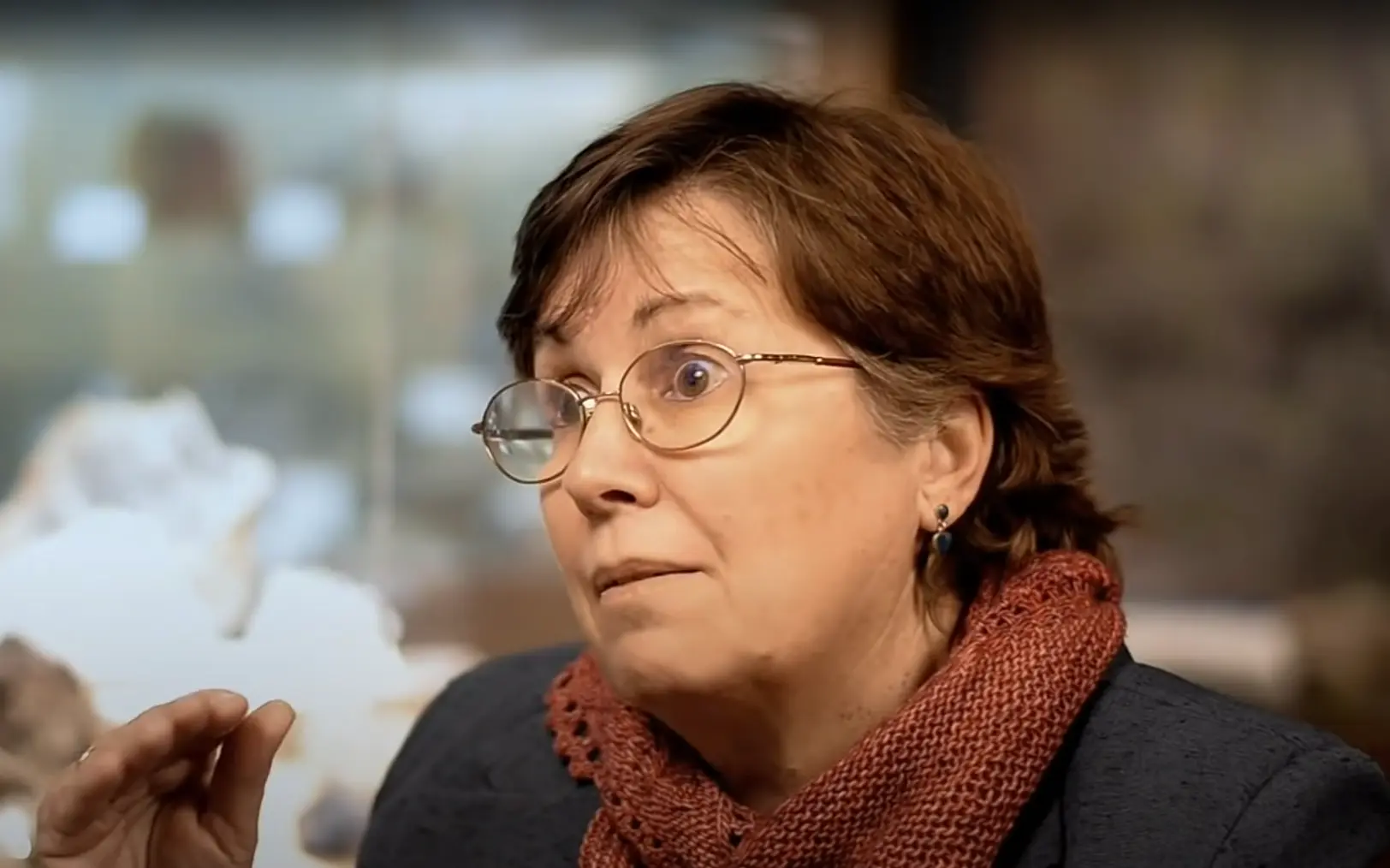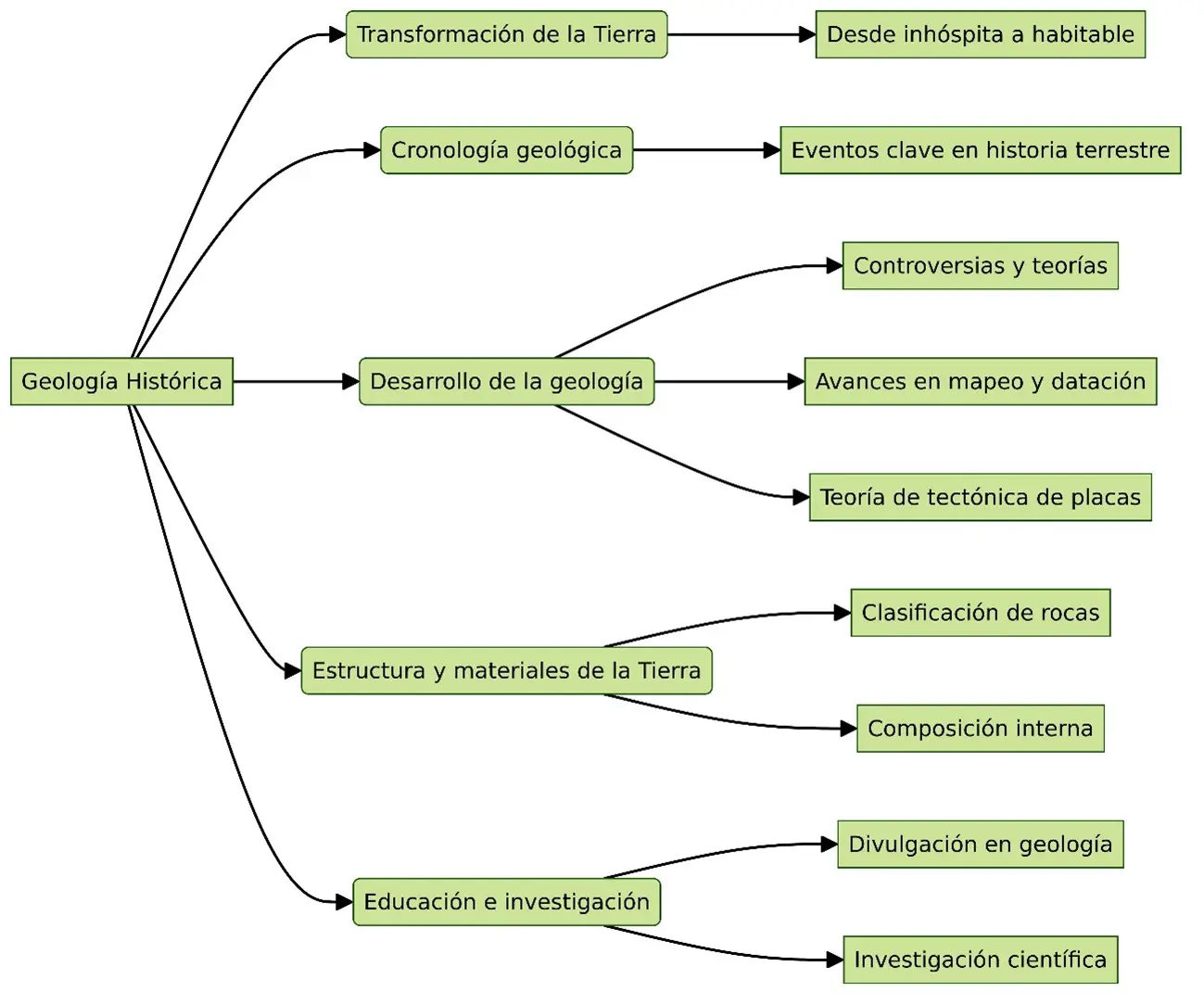La Geología Histórica: Explorando el Pasado Terrestre
Introduction
The video "Historical Geology (first part)" provides a detailed look at the evolution of the Earth, from its formation to the present, through the lens of historical geology. This field of study reveals how geological processes of the past have shaped the world we live in today.
Origins of Historical Geology
Historical geology examines the changes that the Earth has undergone throughout its history. The video highlights that, despite the billions of years that have passed, scientists have managed to decipher the chronology of significant events that have shaped our planet..
Interview with Dr. Susana Ester Damborenea

Dr. Susana Ester Damborenea, a renowned geologist and paleontologist, offers an overview of historical geology. Her career, marked by numerous accolades, provides a living testament to the advancements in this scientific field..
Controversies and Advances in Geology
The video explores the main controversies and theories that have defined geology. From the early disputes between Neptunists and Plutonists to the establishment of uniformitarianism and the theory of plate tectonics, the history of geology is filled with debates and discoveries..
The Age of the Earth and Plate Tectonics
The issue of the Earth's age is addressed, highlighting how estimates have evolved from hundreds of millions to over 4.5 billion years, thanks to radiometric dating. Additionally, the theory of plate tectonics is explained, which provides a comprehensive understanding of geological processes.
Materials and Structure of the Earth
The video describes the different types of terrestrial materials and how they are classified into sedimentary, igneous, and metamorphic rocks. This classification reflects the geological history and the processes that formed these rocks..
Exploration of the Earth's Structure
The structure of the Earth is examined, from the crust to the core, and how geophysics has allowed for a better understanding of the planet's internal composition and dynamics..
Conclusion
"Historical Geology (first part)"provides a solid foundation for understanding how past geological events have shaped the current world. Through interviews with experts and a thorough review of theories and discoveries, this video is a valuable resource for anyone interested in the history of our planet.
We make this learning resource available to our community, which is part of the training materials for the courses and programs on diamond drilling for technical personnel, consisting of supervisors, drillers, and drilling assistants.
We recommend our community to dive into reading this interesting interview that we have prepared to immerse in historical geology and, of course, in watching the videos, which consist of two parts:
1. Historical Geology (first part)
Key points
🌎 Terrestrial evolution: The Earth has undergone transformations since its creation, going from inhospitable to habitable.
📖 History of geology: From initial controversies to the development of current theories, geology has evolved significantly.
🌋 Geological theories: Debates such as catastrophism versus uniformitarianism have shaped the evolution of geological ideas.
🗺 Cartography and geological exploration: Advances in mapping and dating have provided greater understanding of the structure and age of the Earth.
🎓 Geology experts: Figures like Dr. Susana Ester Damborenea contribute with deep knowledge in the field.
📚 Geological education: The importance of teaching and disseminating geology to understand our planet .
🧪 Geological research and development: Scientific progress has improved our understanding of historical geology .
Diagrama

Second part
LHistorical Geology (second part) [HD-REM]
The video "Historical Geology (second part)" presents a deep analysis of the significant changes and events in the history of the Earth, exploring the key concepts and findings in the field of historical geology.
Summary
- Introduction to Historical Geology: The video begins with an introduction to historical geology, highlighting how the Earth has undergone drastic changes since its formation, transitioning from an inhospitable environment to the complex biosphere we have today..
- Geological time scale: The use of the international stratigraphic chart is explained, which hierarchizes the temporal divisions of Earth's history and is periodically updated to reflect new findings..
- Global boundary stratotypes: The global boundary stratotypes are discussed, specific points on the planet where the boundaries between different geological eras are defined, based on studies of rocks, biostratigraphy, and radiometric dating..
- Development of life and the Earth's atmosphere: The video describes the initial stages of the Earth, including the formation of its atmosphere and the emergence of life under primitive conditions..
- Hadean, Archean, and Proterozoic Eons: The geological and biological evolution during these eons is detailed, highlighting the cooling of the planet, the formation of the Earth's crust, and the first evidence of life.
- Importance of stromatolites and photosynthesis: The role of stromatolites and photosynthesis in the transformation of the Earth's atmosphere and the enrichment of oxygen, essential for the development of complex life, is mentioned..
- Supercontinents and geological changes: The video explores the formation and breakup of supercontinents such as Columbia, Rodinia, and Pannotia, and how these events influenced biological diversity and environmental changes.
- Phanerozoic Eon and its eras: The three major eras of the Phanerozoic (Paleozoic, Mesozoic, Cenozoic) are examined, highlighting events such as the Cambrian explosion, the age of dinosaurs, and the dominance of mammals in the Cenozoic..
- Mass extinctions and their impact: The five major extinctions throughout Earth's history are discussed, analyzing their possible causes and the impact on biodiversity and ecosystems..
- Interconnection of geological and biological phenomena: The video concludes by emphasizing the interrelationship between geological processes, such as plate tectonics and climate changes, with the evolution and diversity of life on Earth.
Puntos clave
- 🌍 Terrestrial transformations: The Earth has gone from being an inhospitable environment to hosting a rich biodiversity.
- 📅 Time scale: Historical geology uses an international stratigraphic framework to organize geological eras.
- 📍 Stratotypes: Specific points in the world define the boundaries between different geological eras.
- 🌬️ Primitive atmosphere: The evolution of the Earth's atmosphere was crucial for the development of life.
- 🕒 Ancient eons: The Hadean, Archean, and Proterozoic mark the first geological and biological stages of Earth.
- 🌿 Origins of life: Stromatolites and photosynthesis played a fundamental role in biological evolution.
- 🌐 Supercontinents: The formation and fragmentation of supercontinents had a significant impact on biodiversity.
- 🦕 Dinosaur Era: The Mesozoic was characterized by the predominance of dinosaurs and large reptiles.
- 🚀Mass extinctions: Extinction events drastically altered biological diversity and ecosystems.
- 🔁 Interrelation of phenomena: Geological and biological changes are deeply interconnected in the history of the Earth.
Diagram

Conclusions
The study of historical geology allows us to understand the dynamic and complex processes that have shaped our planet and the life it hosts. Through geological stratification and paleontology, a fascinating narrative of transformations and events that have defined the history of Earth is revealed.
Recommendations:
- Watch video: La geología Histórica (primera parte)
- View official transcript: La geología Histórica (primera parte)
- View enriched transcription on our platform: La geología Histórica (primera parte)
- Watch video: La geología Histórica (segunda parte)
- View official transcript: La geología Histórica (segunda parte)
- View enriched transcription on our platform: La geología Histórica (segunda parte).